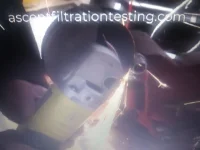Sorry I'm late to the party, would it be possible to get some tests on K&N Gold oil filters (with the nut on top) to see exactly how they stack up to their competitors in the same price range? I haven't seen any meaningful data on their efficiency, at least from K&N themselves, and I have a hard time justifying the extra cost without concrete details.
If someone has good data already, please feel free to send it over!
If someone has good data already, please feel free to send it over!


